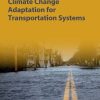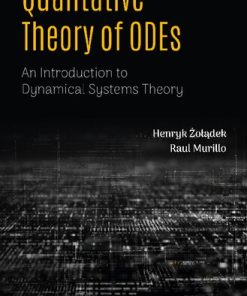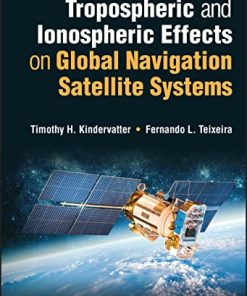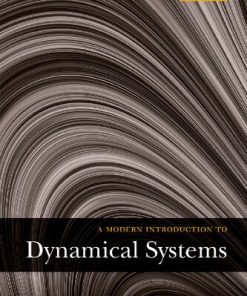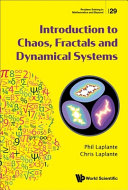(Ebook PDF) The Dynamical Ionosphere A Systems Approach to Ionospheric Irregularity 1st Edition by Massimo Materassi 0128147830 9780128147832 full chapters
$50.00 Original price was: $50.00.$25.00Current price is: $25.00.
The Dynamical Ionosphere: A Systems Approach to Ionospheric Irregularity 1st Edition by Massimo Materassi – Ebook PDF Instant Download/DeliveryISBN: 0128147830, 9780128147832
Full download The Dynamical Ionosphere: A Systems Approach to Ionospheric Irregularity 1st Edition after payment
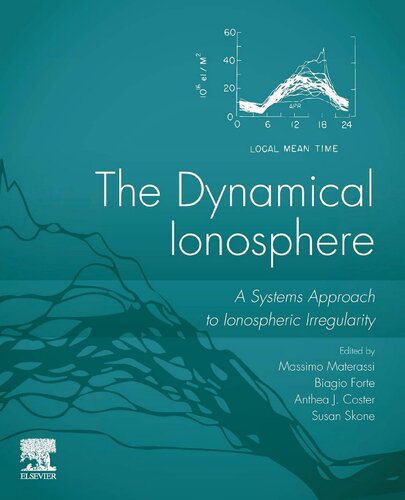
Product details:
ISBN-10 : 0128147830
ISBN-13 : 9780128147832
Author: Massimo Materassi
The Dynamical Ionosphere: A Systems Approach to Ionospheric Irregularity examines the Earth’s ionosphere as a dynamical system with signatures of complexity. The system is robust in its overall configuration, with smooth space-time patterns of daily, seasonal and Solar Cycle variability, but shows a hierarchy of interactions among its sub-systems, yielding apparent unpredictability, space-time irregularity, and turbulence. This interplay leads to the need for constructing realistic models of the average ionosphere, incorporating the increasing knowledge and predictability of high variability components, and for addressing the difficulty of dealing with the worst cases of ionospheric disturbances, all of which are addressed in this interdisciplinary book.
The Dynamical Ionosphere: A Systems Approach to Ionospheric Irregularity 1st Table of contents:
Part I: The earth’s ionosphere, an overview
Chapter 1: Introduction
Abstract
Chapter 2: Day-to-day variability of the ionosphere
Abstract
1 Overview
2 Quantifying ionospheric variability: Peak electron density and total electron content
Chapter 3: Ionospheric conjugate point science: Hemispheric coupling
Abstract
1 Plasma instability conjugate science
2 Electrobuoyancy conjugate science
3 Transitions from conjugate to nonconjugate science: Coherence of ionospheres not connected by B-field lines
Chapter 4: Status and future directions
Abstract
Chapter 5: Mid-latitude ionospheric features: Natural complexity in action
Abstract
Acknowledgments
1 Introduction
2 Plasmasphere boundary layer
3 Ionospheric consequences of mid-latitude M-I electrodynamics
4 Geospace system impacts of PBL electron density structuring
5 Mid-latitude ionospheric irregularities
6 Conclusion
Chapter 6: Empirical ionospheric models
Abstract
Acknowledgment
1 Conceptual introduction
2 Ionospheric models
3 Brief history of the empirical ionospheric models
4 IRI model
5 NeQuick model
6 The future
Chapter 7: Wrap up
Abstract
Part II: Global complexity
Chapter 8: Space weather: Variability in the Sun-Earth connection
Abstract
1 The Sun
2 Changes in the Sun
3 The solar wind and its variability
4 Space storms
Chapter 9: Storms and substorms—The new whole system approach and future challenges
Abstract
Acknowledgments
1 Introduction
2 New developments
3 Summary and future challenges
Chapter 10: Geomagnetically induced currents
Abstract
Acknowledgments
1 Introduction
2 Geomagnetic storm
3 Geomagnetically induced currents evaluation
4 The 2015 June event
5 A comparison with 2015 St. Patrick’s Day storm
6 Summary and Conclusion
Part III: Local irregularities
Chapter 11: From instability to irregularities
Abstract
Acknowledgments
1 Introduction
2 Theoretical background
3 Interchange instabilities and equatorial spread F (ESF)
4 Instability in sporadic-E-layers
5 Farley-Buneman waves
6 Artificial irregularities and ionospheric modification
7 Summary and conclusions
Chapter 12: Equatorial F region irregularities
Abstract
1 Introduction
2 Observational techniques used in ESF investigation, and the irregularity types
3 Spatial and temporal distribution, and variabilities of the irregularities
4 Summary
Chapter 13: Scintillation theory
Abstract
1 Introduction
2 The Rytov approximation
3 Mutual coherence function
4 The parabolic wave equation
5 MPS calculation
6 Formulation
7 Conclusion
Part IV: The future era of ionospheric science
Chapter 14: The complex ionosphere
Abstract
1 Introduction
2 Smooth and deterministic: FD of the EI
3 Noisy turbulence in the equatorial spread F
4 A few take-home messages
Chapter 15: High-resolution approaches to ionospheric exploration
Abstract
1 Introduction
2 Conceptual framework
3 Sensor models
4 Data fusion
5 Summary
Chapter 16: Advanced statistical tools in the near-Earth space science
Abstract
Acknowledgments
1 Introduction
2 Scale invariance and statistical properties: Analysis methods
3 Information theory-based approaches
4 Conclusions
Chapter 17: Ionospheric science in the age of big data
Abstract
1 Current state of the ionospheric science
2 Data mining for scientific data landscape
3 Ionospheric questions that can benefit from machine learning
4 Infrastructure needed to enable big data approaches
5 Summary and future
Chapter 18: Scintillation modeling
Abstract
1 Introduction
2 Propagation modeling from real in situ measurements: The WAM model
3 From semi-empirical to empirical climatology
4 Critical review and perspectives
Chapter 19: Multiscale analysis of the turbulent ionospheric medium
Abstract
Acknowledgments
1 Introduction
2 Multiscale nature of the ionospheric medium
3 Application: Case study in the ionosphere
Chapter 20: The future of the ionosphere (according to us…)
People also search for The Dynamical Ionosphere: A Systems Approach to Ionospheric Irregularity 1st:
dynamical systems theory
dynamic systems theory examples
the ionosphere is made up of
the ionosphere is
the dynamic systems theory was proposed by
Tags:
The Dynamical,Ionosphere,Systems Approach,Ionospheric Irregularity,Massimo Materassi
You may also like…
Computers - Computer Business & Culture
Mathematics - Dynamical Systems
Technique - Electronics: Telecommunications
Medicine - Cardiology
Engineering
A Systems Approach to Managing the Complexities of Process Industries 1st Edition Fabienne Salimi
Physics - Chaos & Dynamic Systems
Earth Sciences
A Guide To The Systems Of Provision Approach: Who Gets What, How And Why 1st Edition Kate Bayliss



